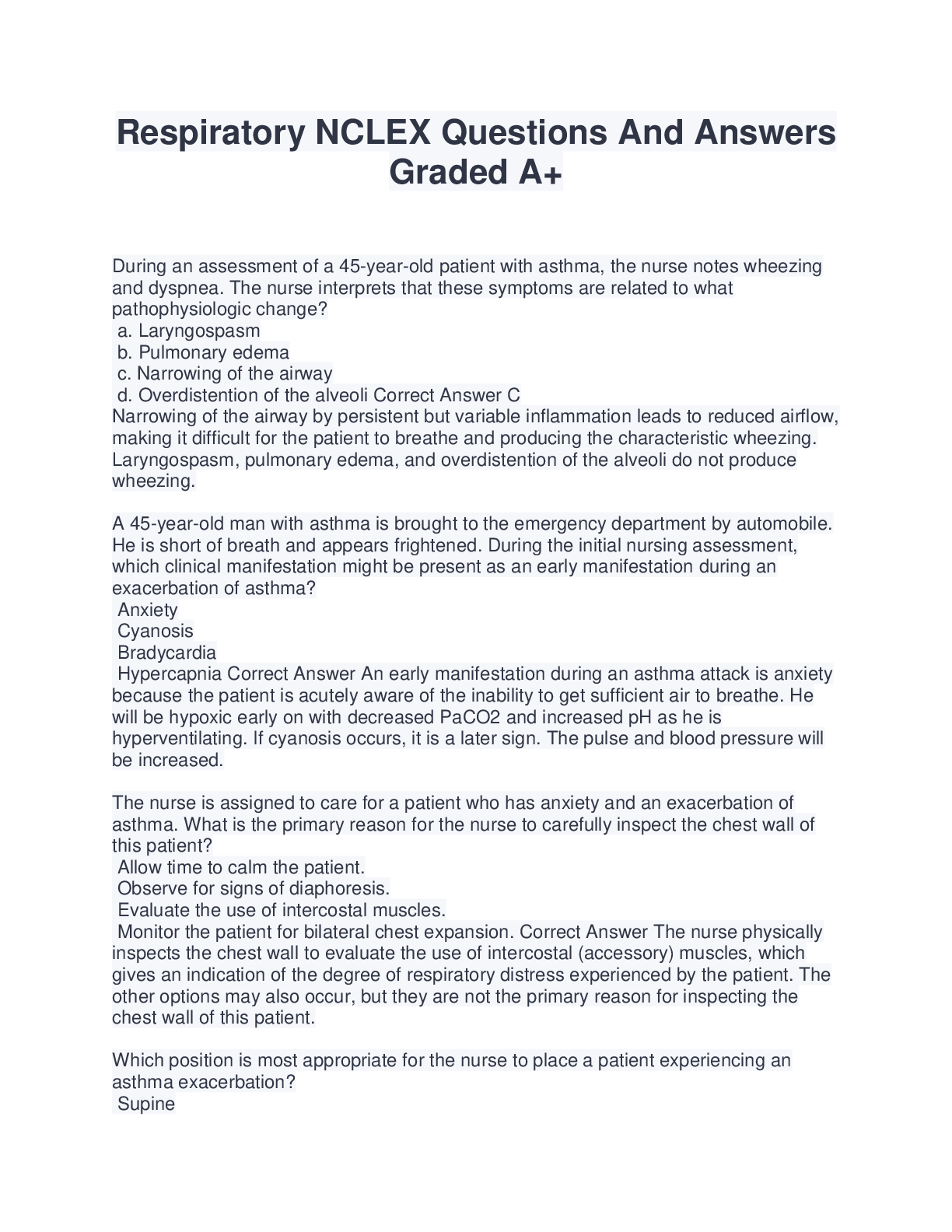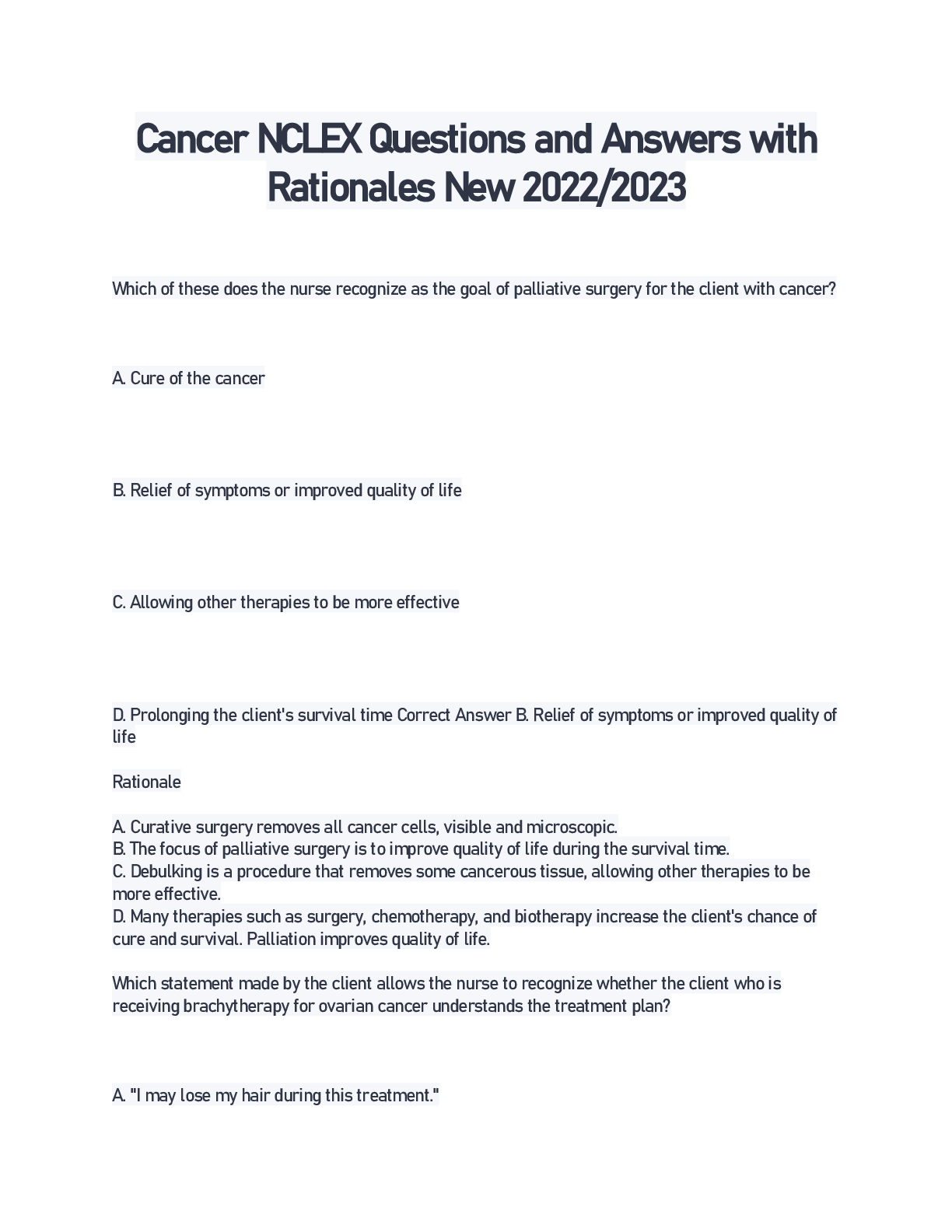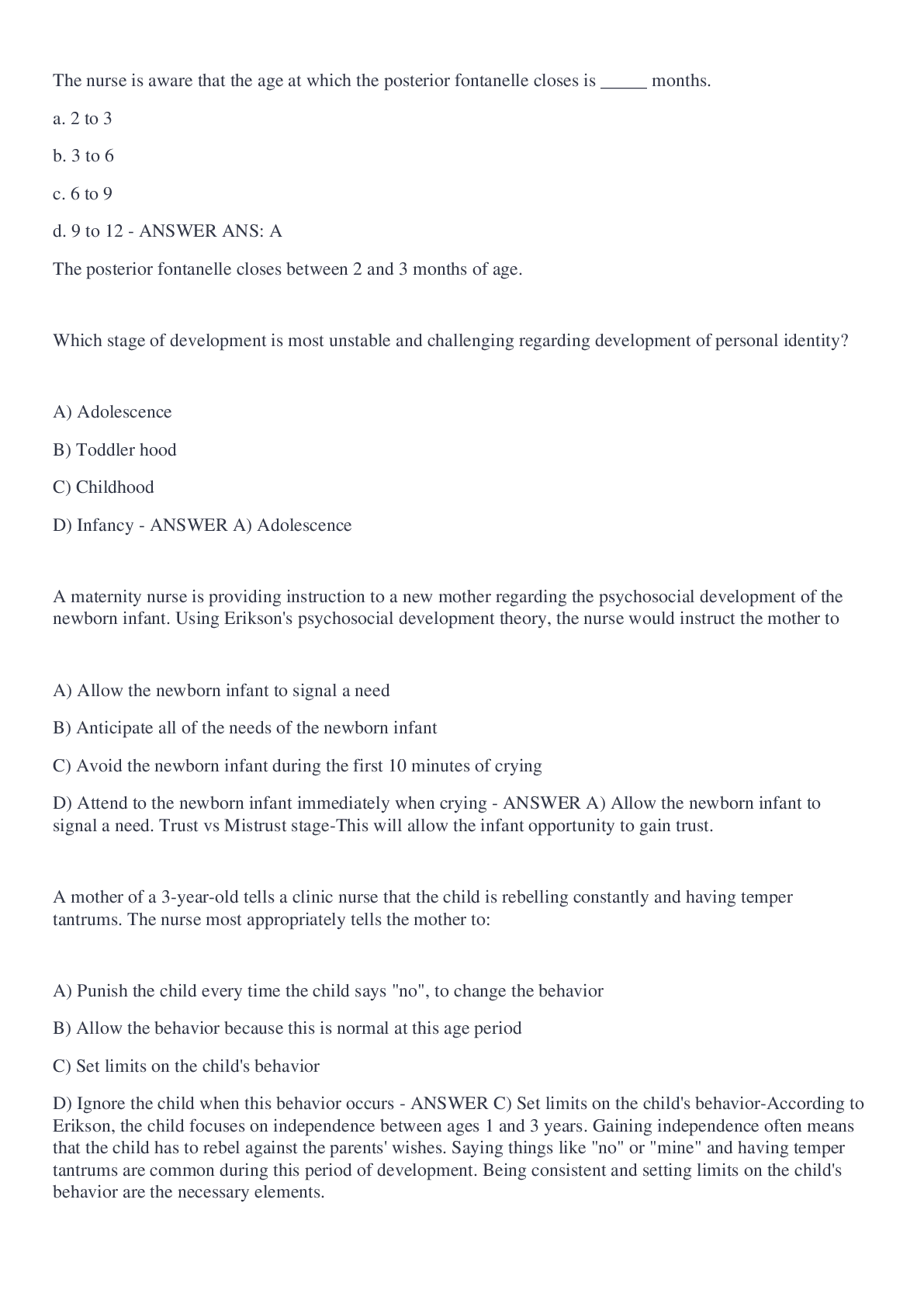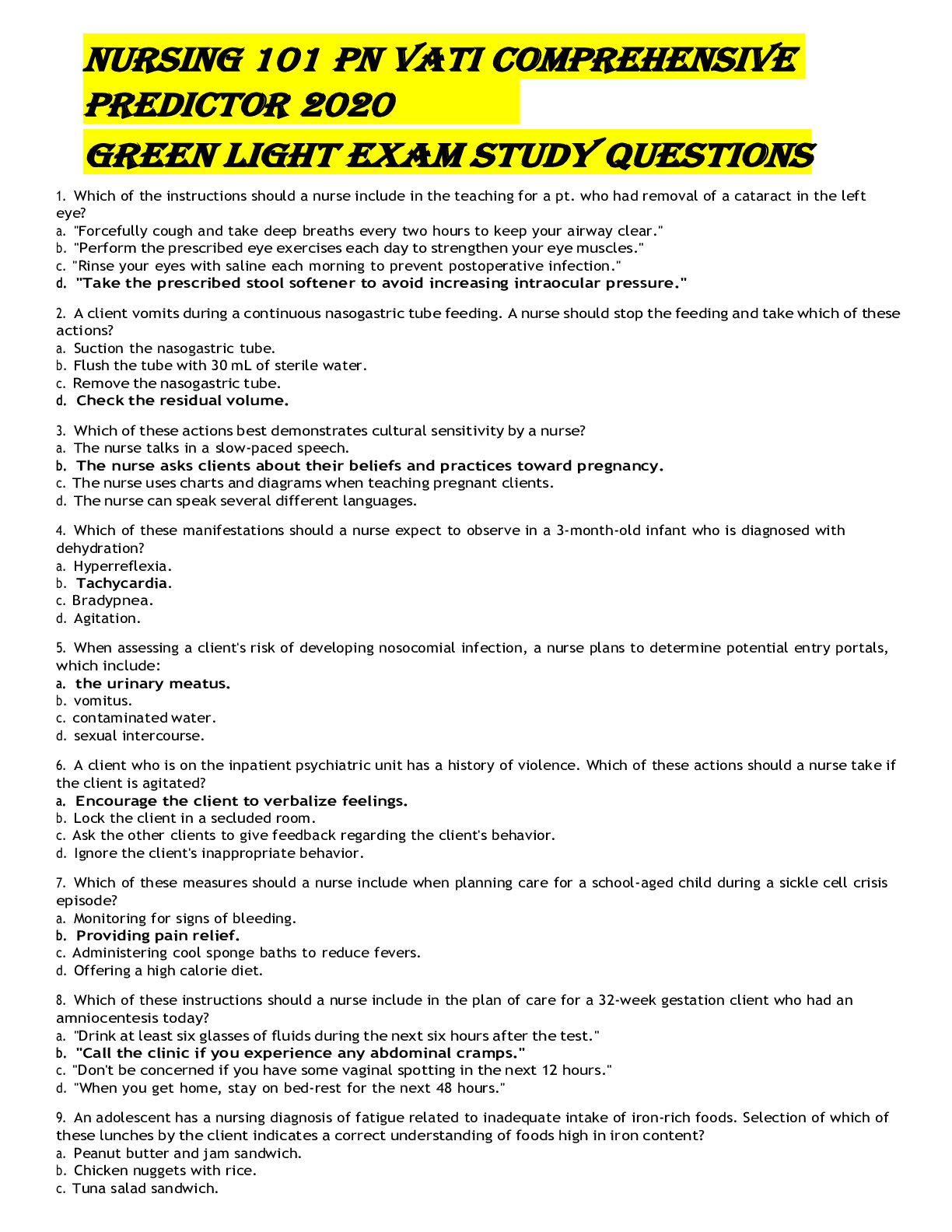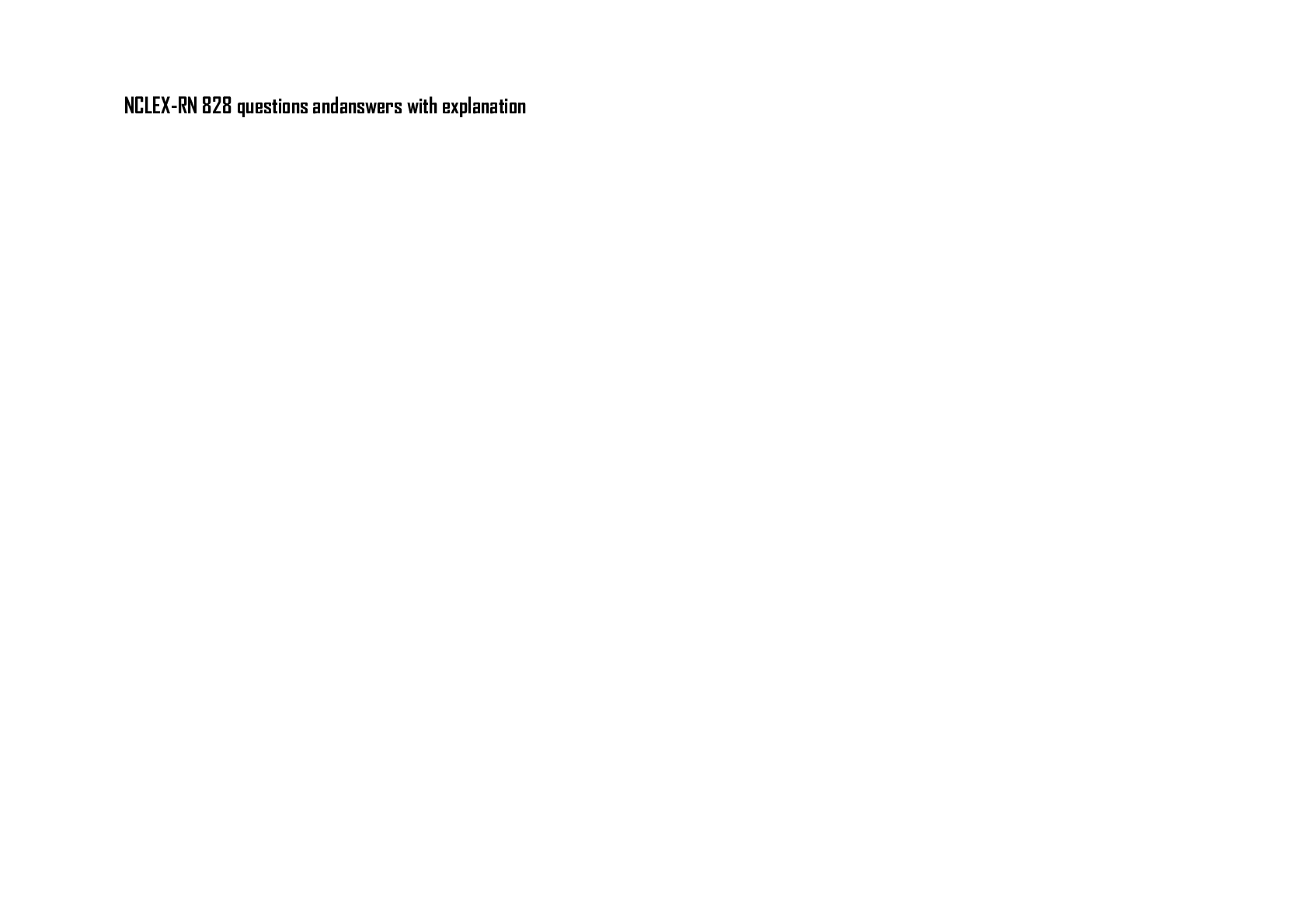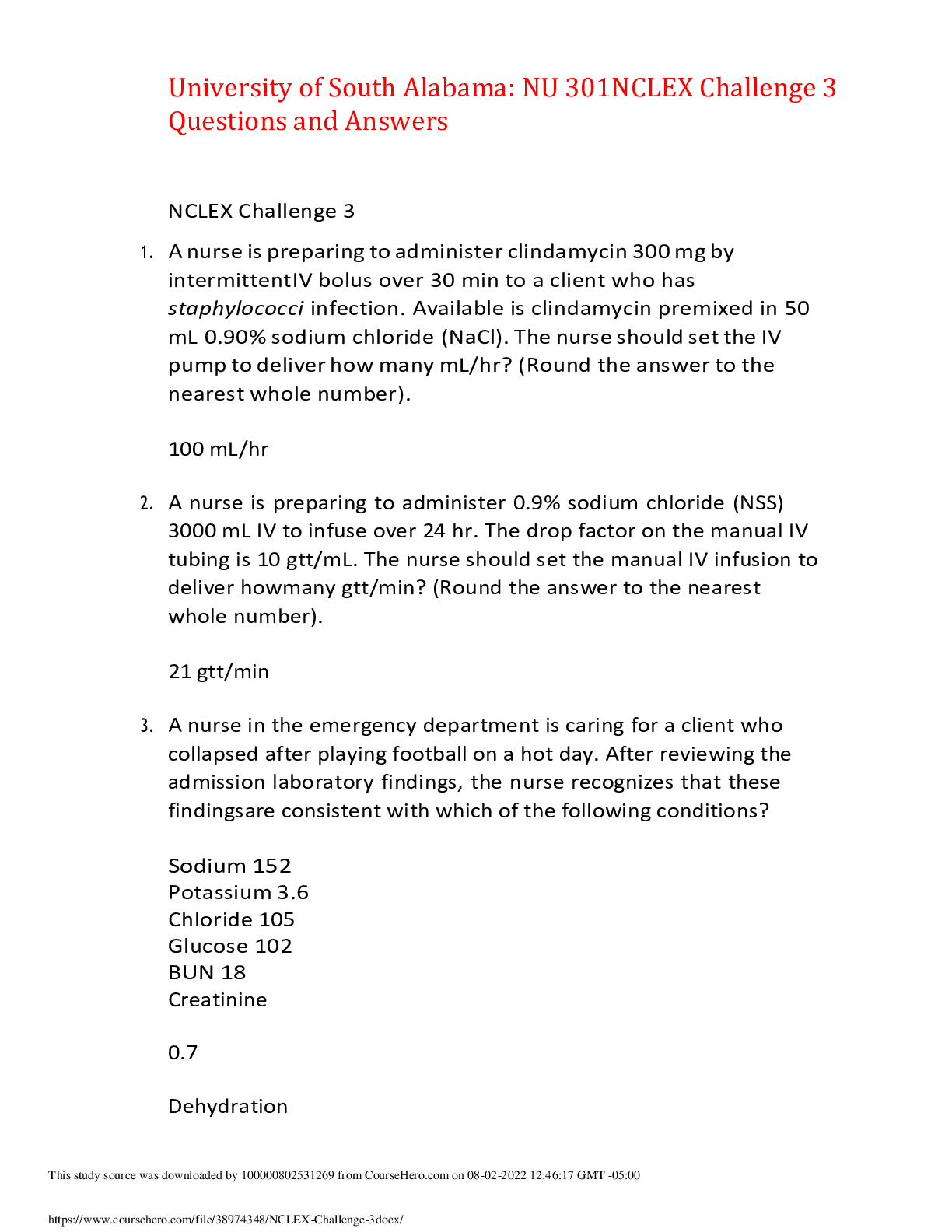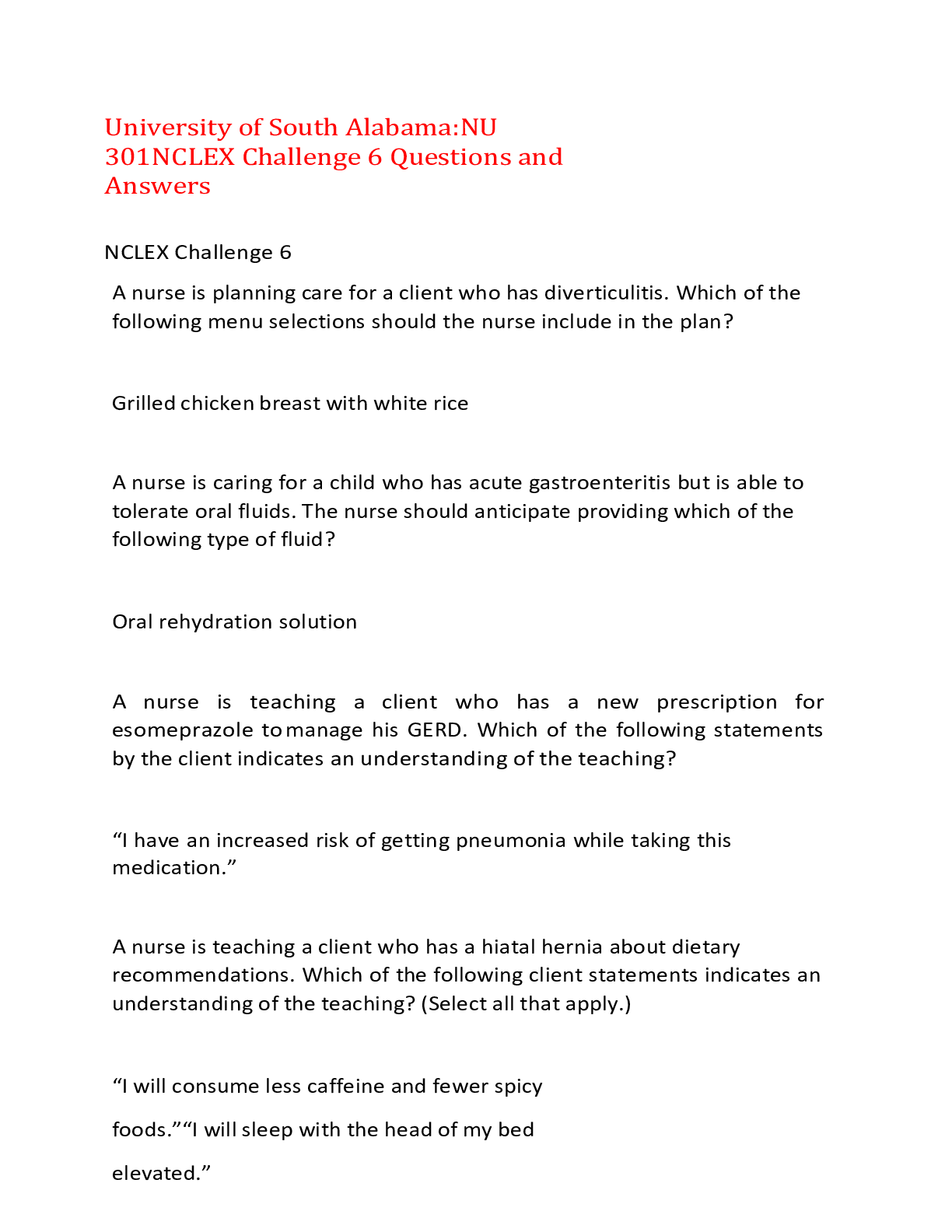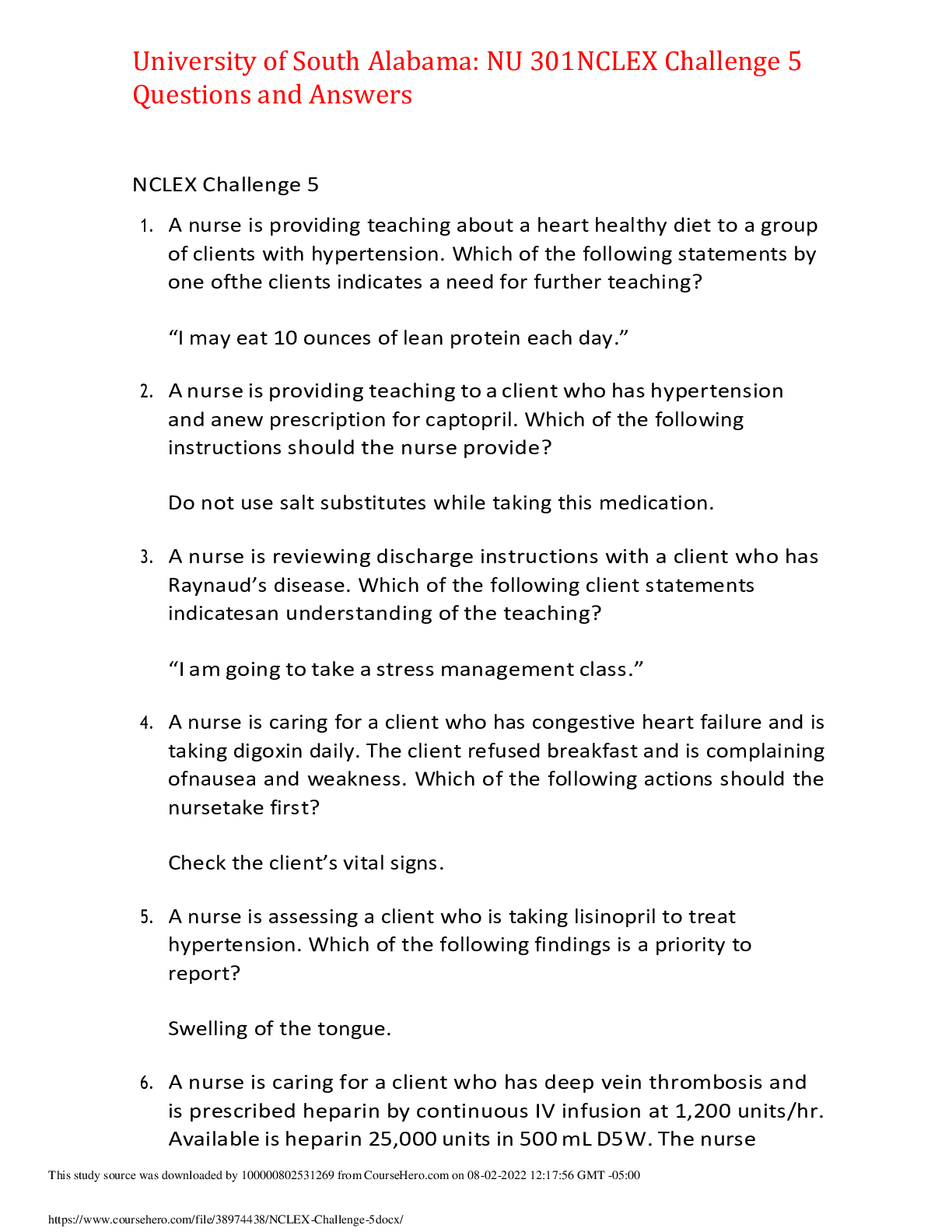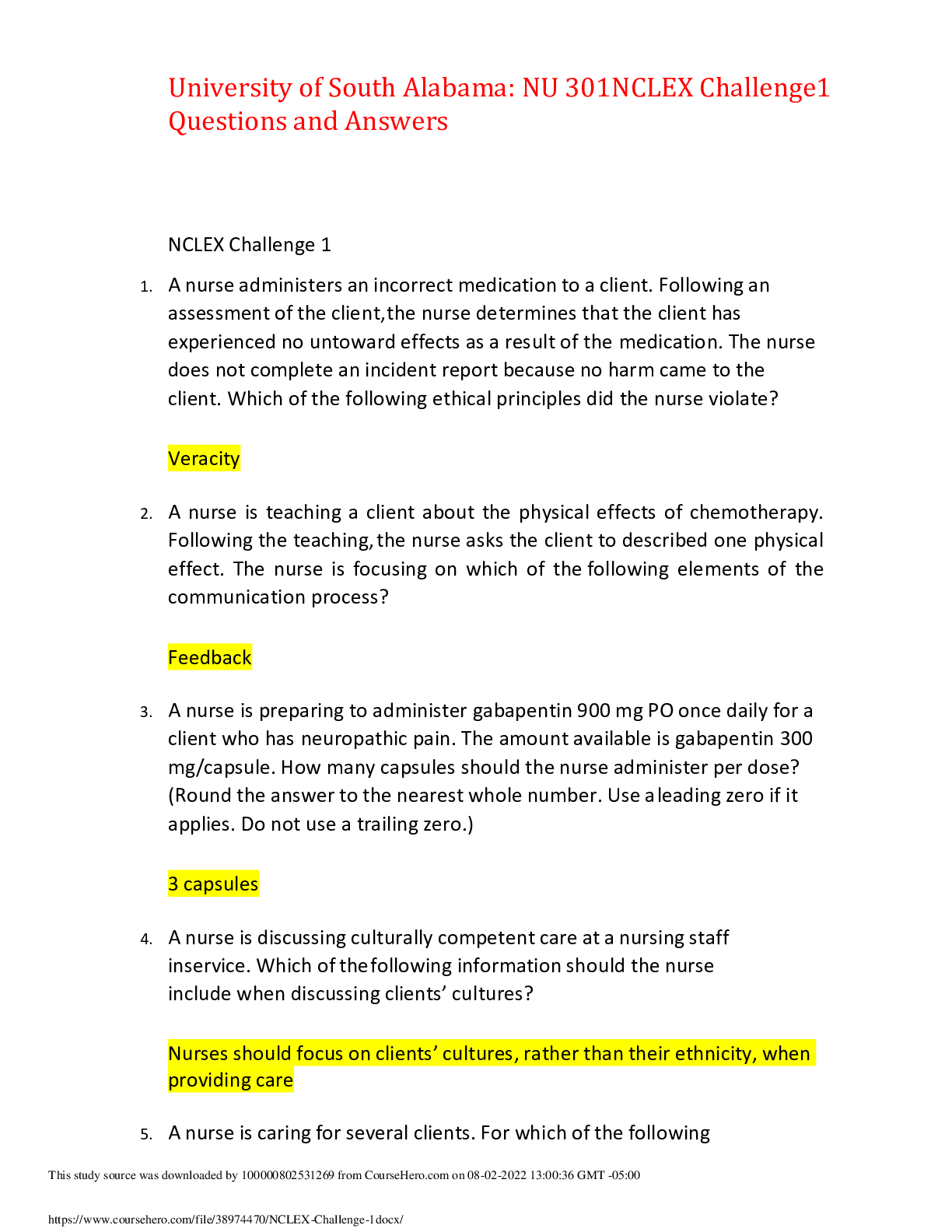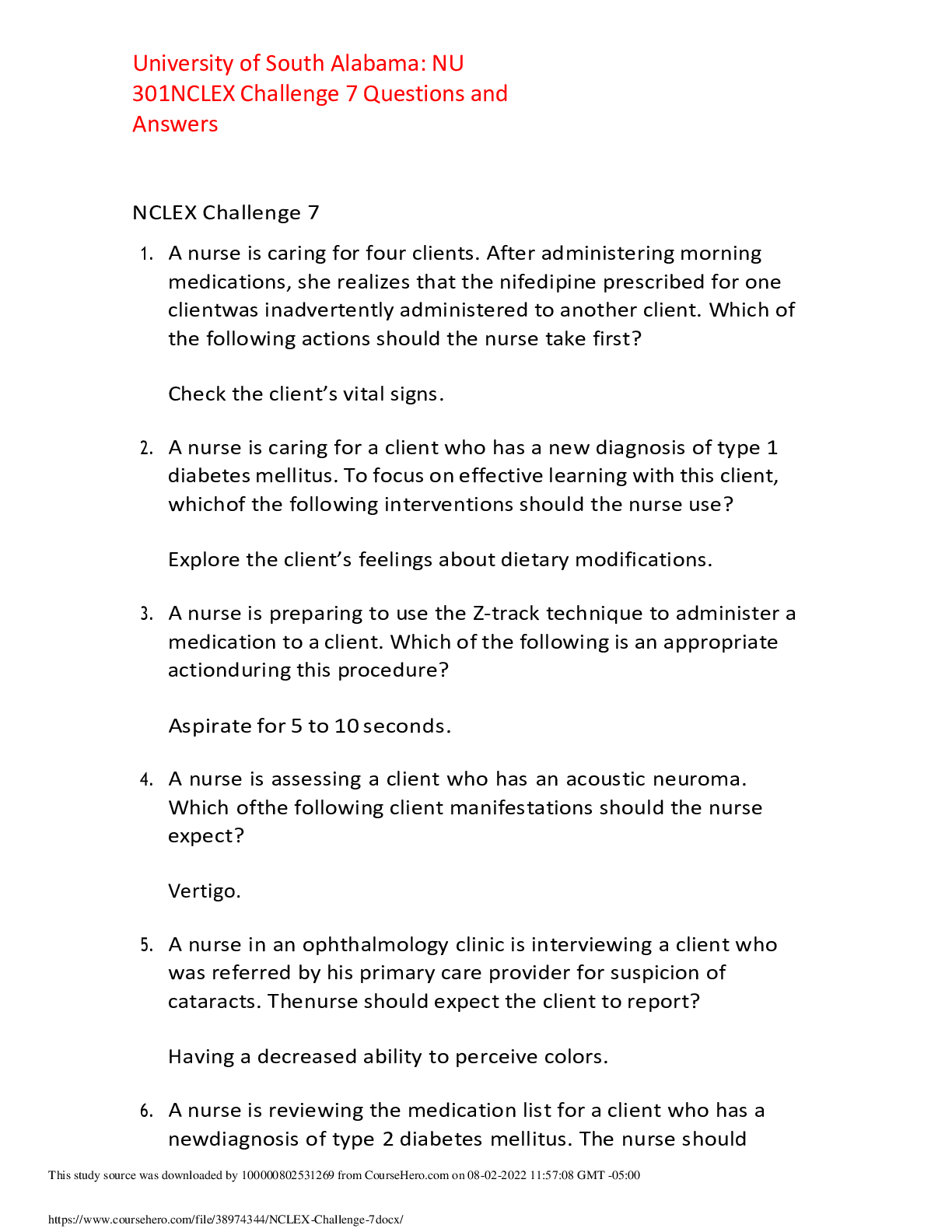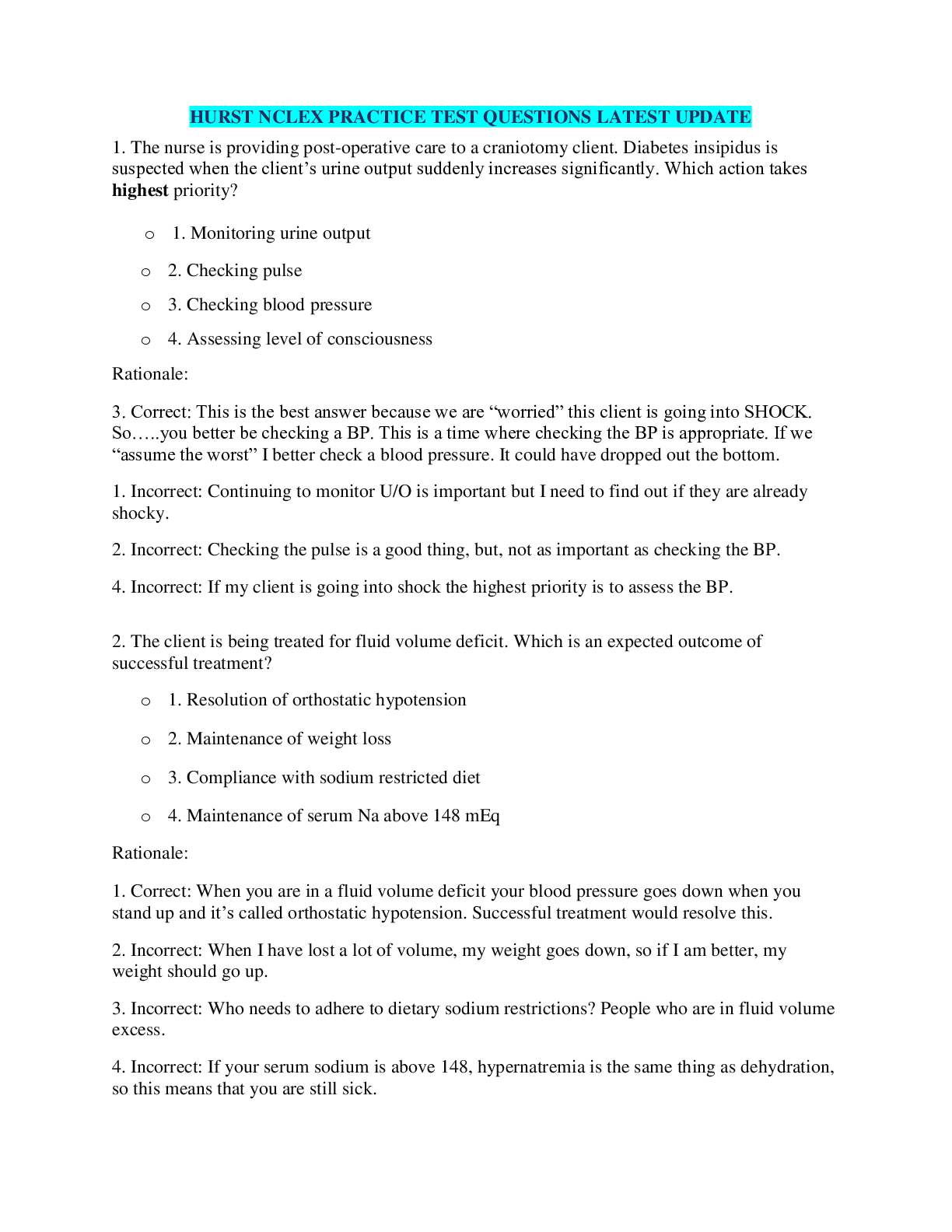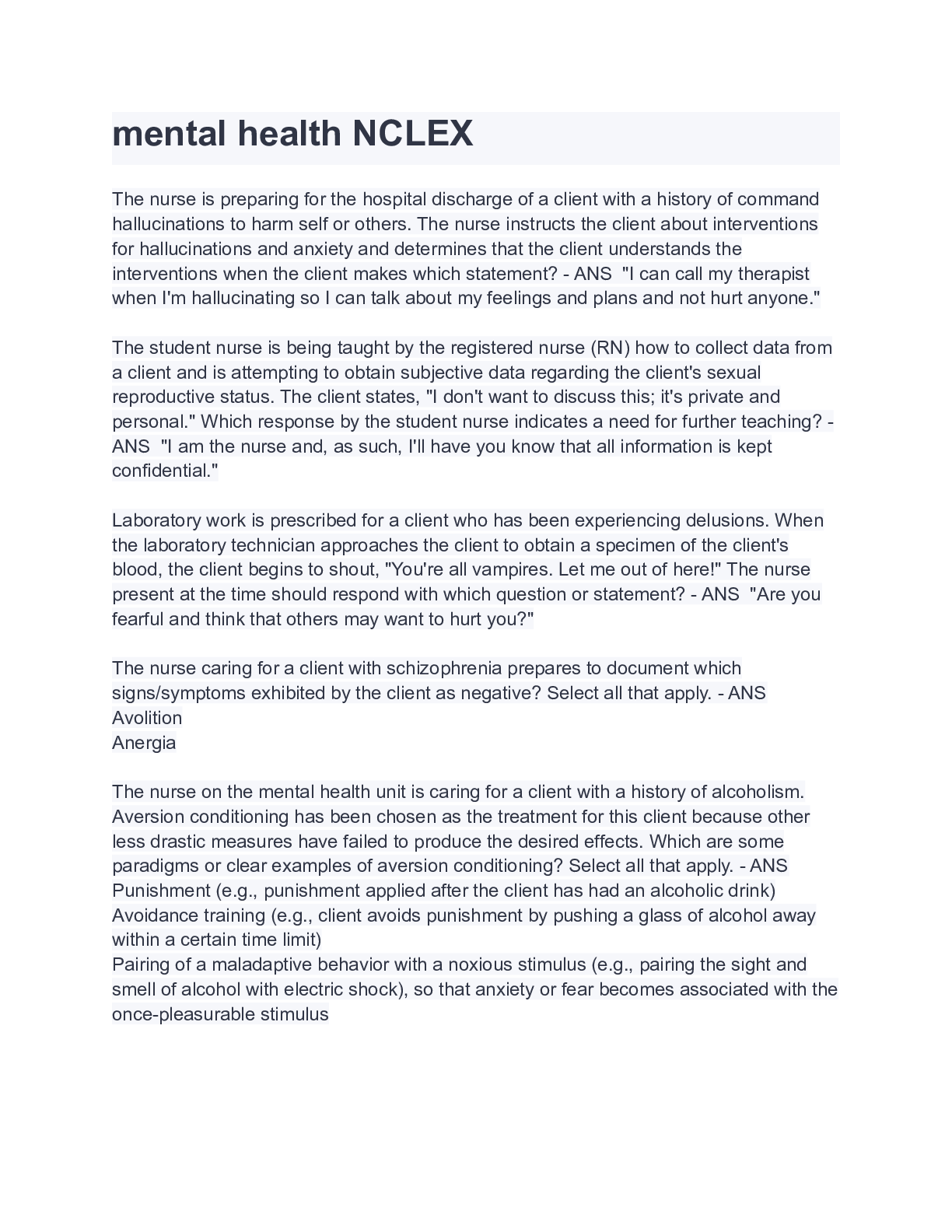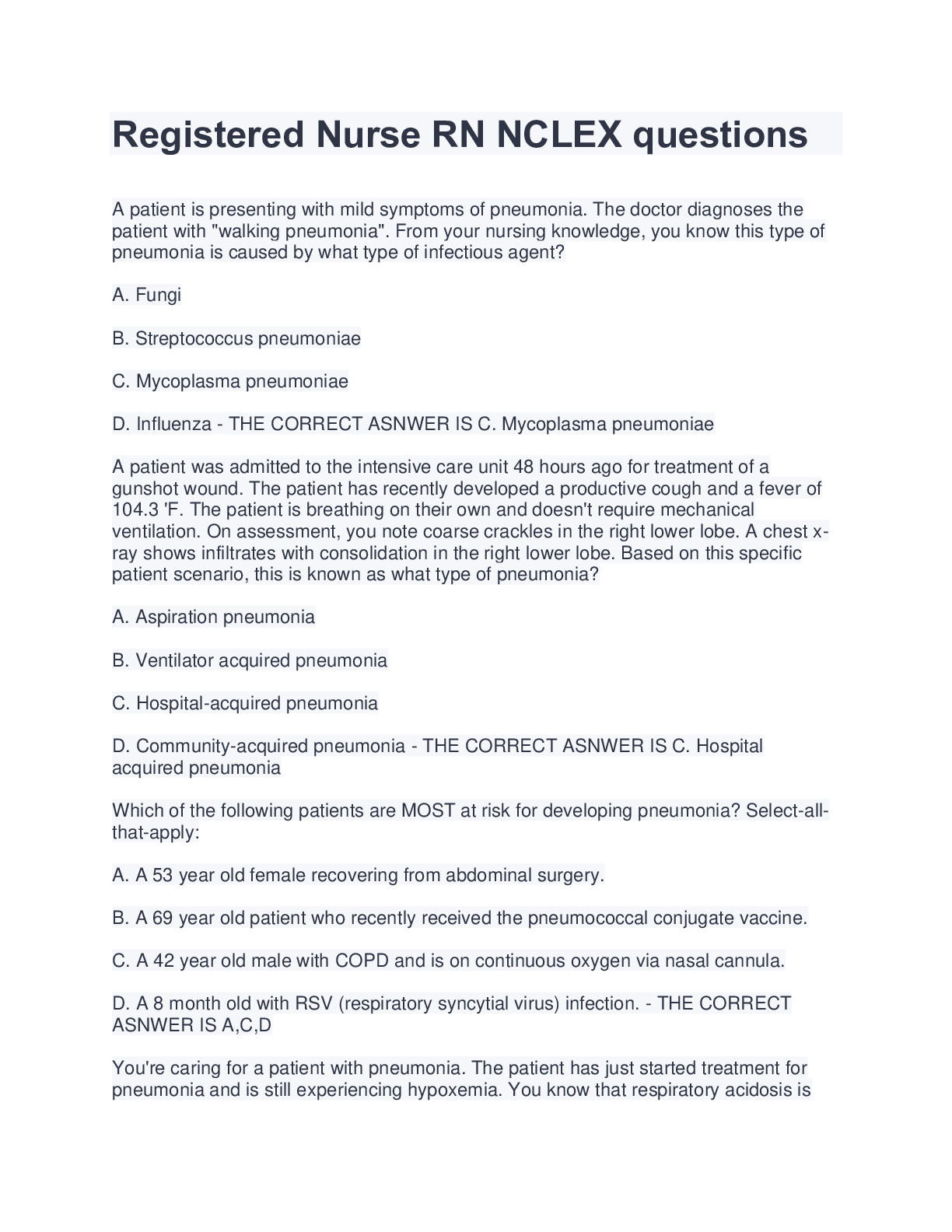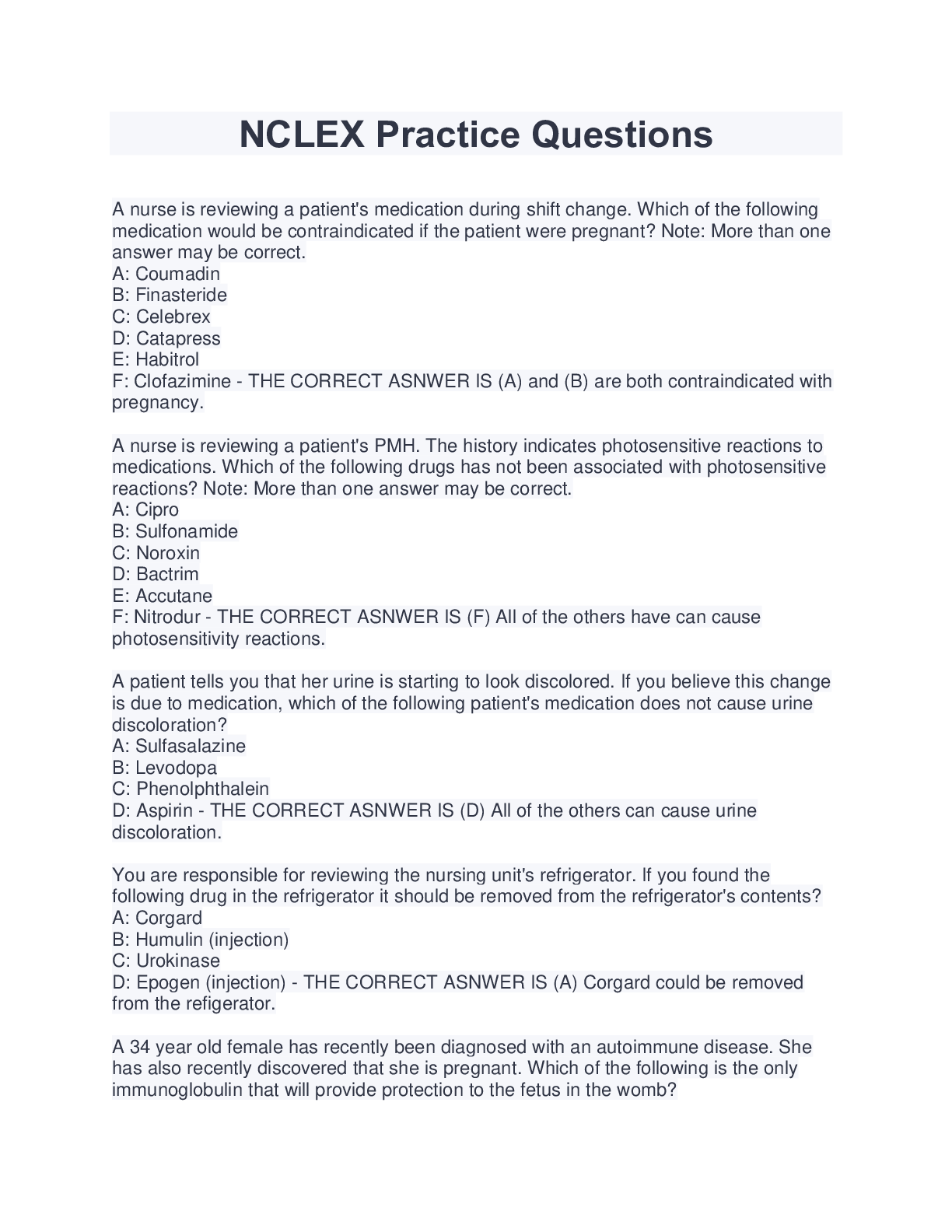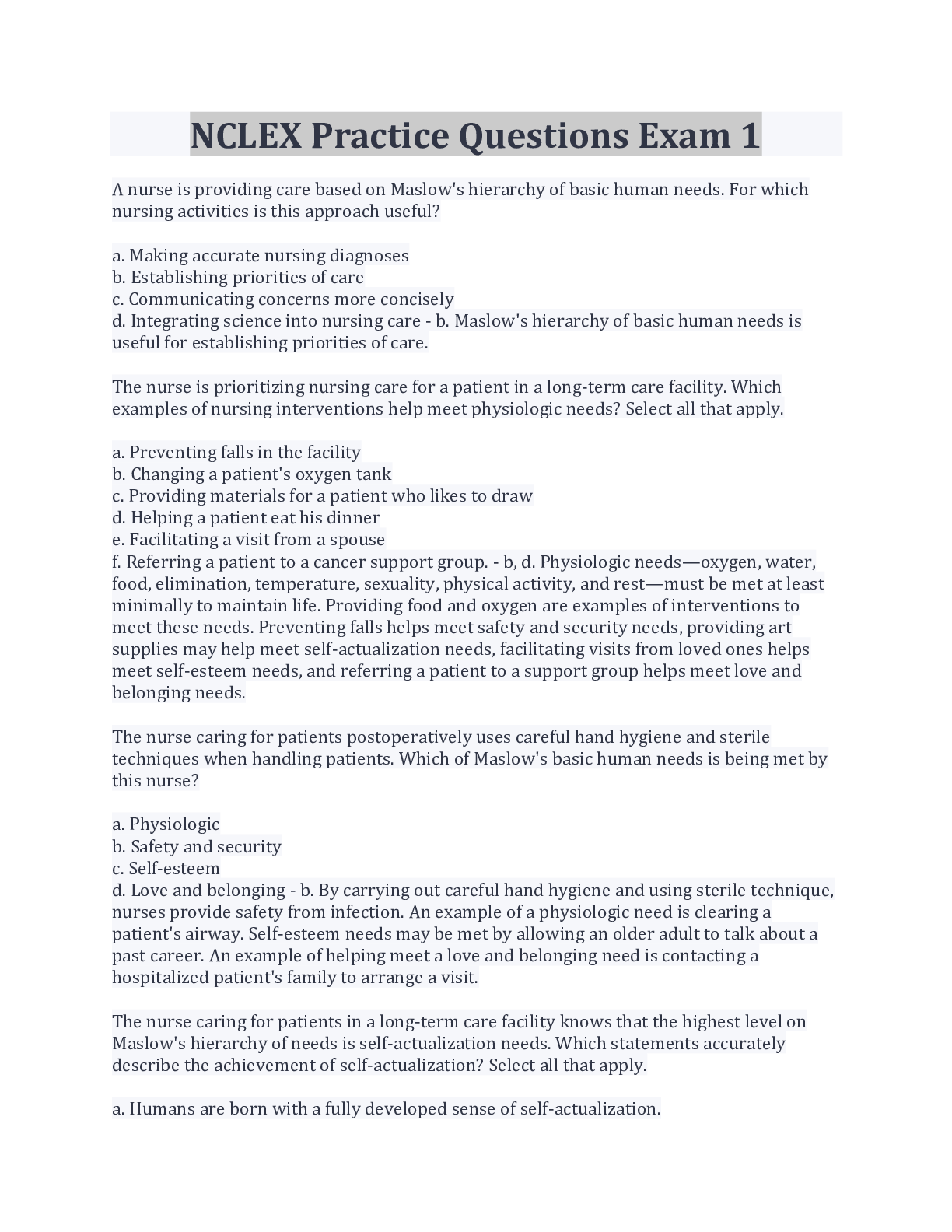Oncology NCLEX Questions and Answers Graded A+
Document Content and Description Below
Oncology NCLEX Questions and Answers Graded A+ A client diagnosed with widespread lung cancer asks the nurse why he must be careful to avoid crowds and people who are ill. What is the nurse's best re... sponse? A. "With lung cancer, you are more likely to develop pneumonia and could pass this on to other people who are already ill." B. "When lung cancer is in the bones, it becomes a bone marrow malignancy, which stops producing immune system cells." C. "The large amount of mucus produced by the cancer cells is a good breeding ground for bacteria and other microorganisms." D. "When lung cancer is in the bones, it can prevent production of immune system cells, making you less resistant to infection." Correct Answer D. Tumor cells that enter the bone marrow reduce the production of healthy white blood cells (WBCs), which are needed for normal immune function. Therefore clients who have cancer, especially leukemia, are at an increased risk for infection. Other people are not at risk for becoming infected as a result of contact with a person who has lung cancer. Lung cancer that has spread to the bone is still lung cancer; it is not a bone marrow malignancy. It is true that the person with lung cancer may produce more mucus, which can harbor microorganisms, but this is not the main reason why the client should avoid crowds and people who are ill. Which precaution is most important for the nurse to teach a client receiving radiation therapy for head and neck cancer? A. Avoid eating red meat during treatment. B. Pace your leisure activities to prevent fatigue. C. See your dentist twice yearly for the rest of your life. D. Avoid using headphones or headsets until your hair grows back. Correct Answer C. Radiation therapy that is directed in or around the oral cavity has a variety of actions that increase the risk for dental caries (cavities) and tooth decay. The salivary glands are affected, which changes the composition of the person's saliva and often causes "dry mouth." This result allows rapid bacterial overgrowth, which leads to cavity formation. In addition, the radiation damages the integrity of the enamel and also damages some of the living cells in the tooth. All contribute to an increased risk for dental infections and cavities. A client receiving high-dose chemotherapy who has bone marrow suppression has been receiving daily injections of epoetin alfa (Procrit). Which assessment finding indicates to the nurse that today's dose should be held and the health care provider notified? A. Hematocrit of 28% B. Total white blood cell count of 6200 cells/mm3 C. Blood pressure change from 130/90 mm Hg to 148/98 mm Hg D. Temperature change from 99° F (37.2 C) to 100 F (37.8 C) Correct Answer C. Epoetin alfa and other erythropoiesis-stimulating agents (ESAs) such as darbepoetin alfa (Aranesp) and epoetin alfa (Epogen, Procrit) increase the production of many blood cell types, not just erythrocytes, which increases the client's risk for hypertension, blood clots, strokes, and heart attacks, especially among older adults. Dosing is based on individual client hemoglobin and hematocrit levels to ensure that just enough red blood cells are produced to avoid the need for transfusion but not to bring hemoglobin or hematocrit levels up to normal. The increased blood pressure is an indication to stop this therapy immediately. Which action is most important for the nurse to implement to prevent nausea and vomiting in a client who is prescribed to receive the first round of IV chemotherapy? A. Keep the client NPO during the time chemotherapy is infusing. B. Administer antiemetic drugs before administering chemotherapy. C. Ensure that the chemotherapy is infused over a 4- to 6-hour period. D. Assess the client for manifestations of dehydration hourly during the infusion period. Correct Answer B. When emetogenic chemotherapy drugs are prescribed, the client should receive antiemetic drugs before the chemotherapy drugs are administered. This allows time for prevention of chemotherapy-associated nausea and vomiting; however, the antiemetic therapy cannot stop until all risks for nausea and vomiting have passed. Clients become nauseated and vomit even if they are NPO. [Show More]
Last updated: 1 year ago
Preview 1 out of 22 pages
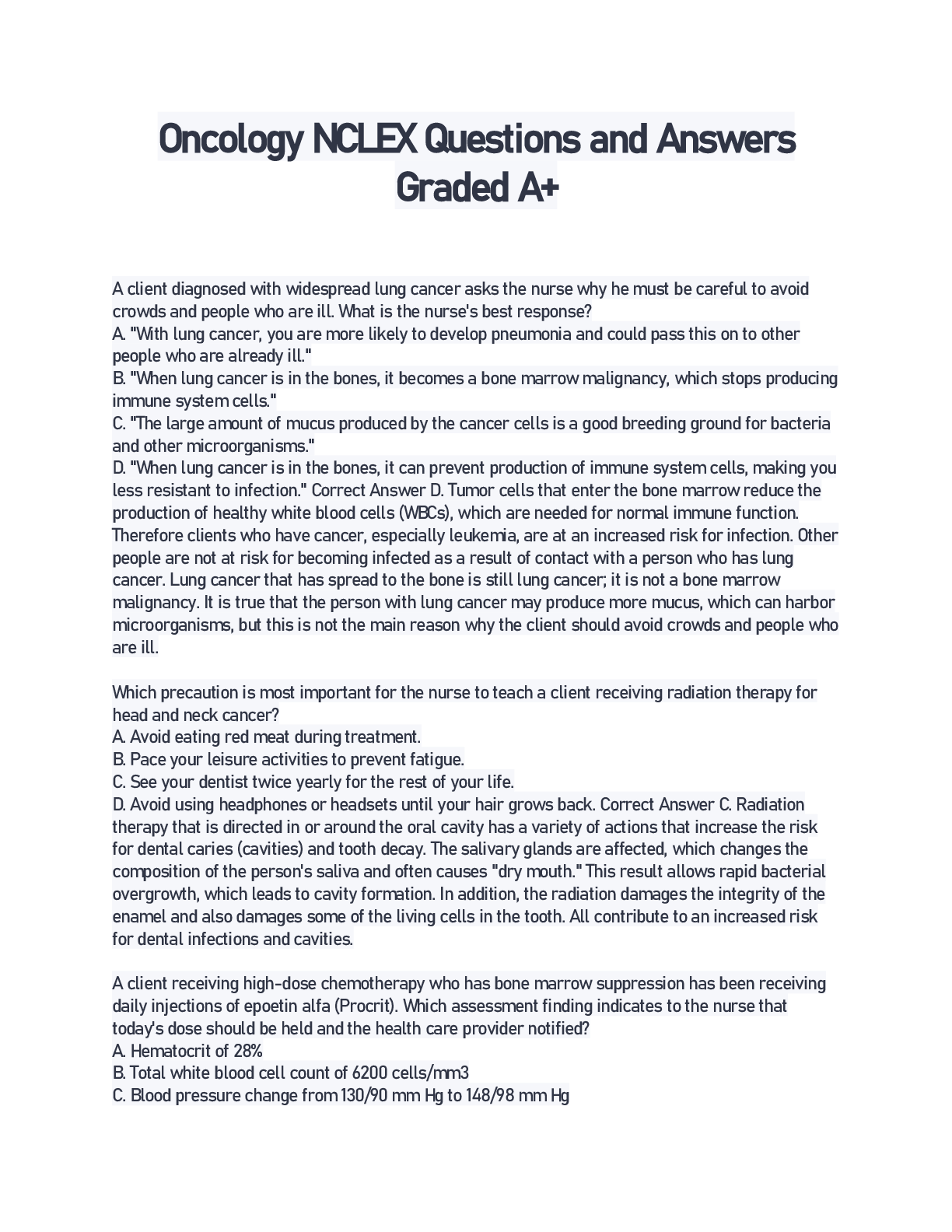
Reviews( 0 )
Document information
Connected school, study & course
About the document
Uploaded On
Sep 13, 2022
Number of pages
22
Written in
Additional information
This document has been written for:
Uploaded
Sep 13, 2022
Downloads
0
Views
30

